Australian sunscreens are a bit unusual. A few people have recently asked me why Australian sunscreens often don’t show a full ingredients list, and why some sunscreens get downgraded from high SPFs to SPF 15 once they hit the Australian market. There’s also the fact that some Australian sunscreens have questionably low SPF ratings, and why some companies just can’t be bothered bringing their sunscreens to the Australian market.
It’s to do with how the Australian Government has chosen to regulate some sunscreens – which I think is generally a great approach, but it does have some weird implications.
Note: This is my unqualified opinion as a skincare nerd / cosmetic chemist – I’m not a lawyer, so don’t rely solely on this if you’re looking to launch an SPF product in Australia!
For more information on sunscreens in general, check out the free sample chapter of The Lab Muffin Guide to Basic Skincare.
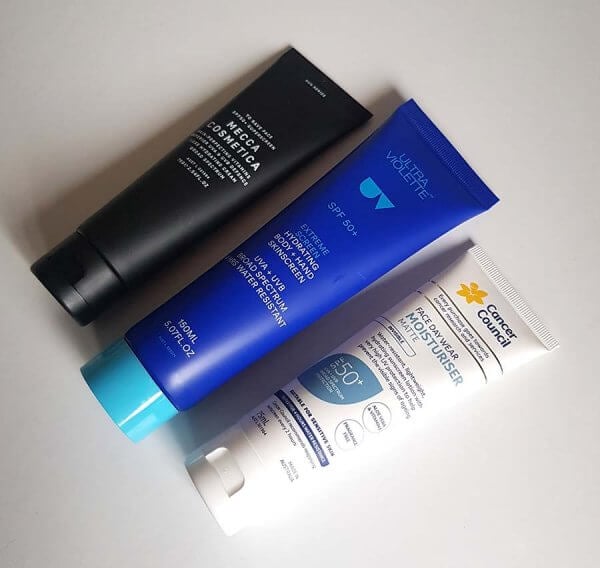
Therapeutic vs cosmetic sunscreens
In Australia, SPF-containing products are divided into therapeutic sunscreens and cosmetic sunscreens.
Therapeutic sunscreens include:
- Primary sunscreens (i.e. products that are marketed to be used primarily as UV protection) higher than SPF 4
- Moisturisers with SPF higher than 15
In other words, these are the serious sunscreens that you’d rely on to protect you from the sun. These are classified as therapeutic goods (i.e. medications or drugs), so they’re regulated by the Therapeutic Goods Administration (the TGA – similar to the FDA in the US, but the drug part only).
(Sunscreens containing some specific ingredients are also regulated: insect repellent, human-derived ingredients, and… animal organs.)
Cosmetic sunscreens are everything else, including:
- lip products with SPF higher than 4
- foundations with SPF higher than 4
- moisturisers with SPF 15 or lower (under 300 g or 300 mL)
- sunbathing skin care products with SPF between 4 and 15 (under 300 g or 300 mL)
These are regulated like regular cosmetic products:
- the Australian Competition and Consumer Commission (ACCC) regulates safety and labelling
- the National Industrial Chemicals Notification and Assessment Scheme (NICNAS) regulates the ingredients
So to avoid classification as a therapeutic sunscreen (and therefore avoid a lot of administrative costs and hurdles, which are sometimes difficult to overcome), a product can classify itself as a moisturiser with an SPF 15 (the most common situation in my experience). However, this means that the product has to be marketed so that it’s clear that its primary purpose is NOT as UV protection, so that consumers aren’t led to rely on a substandard product to protect against the sun – a line which I think is sometimes overstepped.
TGA Regulation
Therapeutic sunscreens need to be listed or registered with the TGA. The vast majority of the time, sunscreens are listed, which has less strict requirements compared to registration (sunscreens are considered lower risk than many other medications out there). However, these regulations are still much stricter than for cosmetic sunscreens.
Sunscreens that make extra therapeutic claims, like reduction of free radicals or immune suppression, need to be registered with the TGA rather than just listed.
Therapeutic sunscreens that are legally allowed to be marketed in Australia can all be found in the Australian Register of Therapeutic Goods (ARTG). My quick check of the ARTG didn’t find any registered SPF products, only listed ones.
The ARTG listing or registration number needs to be printed on the packaging. This is in the format “AUST L [number]” (for listed sunscreens) or “AUST R [number]” (for registered sunscreens):
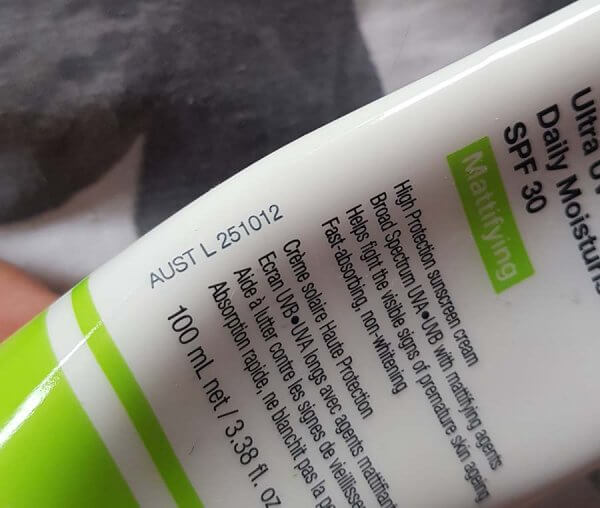
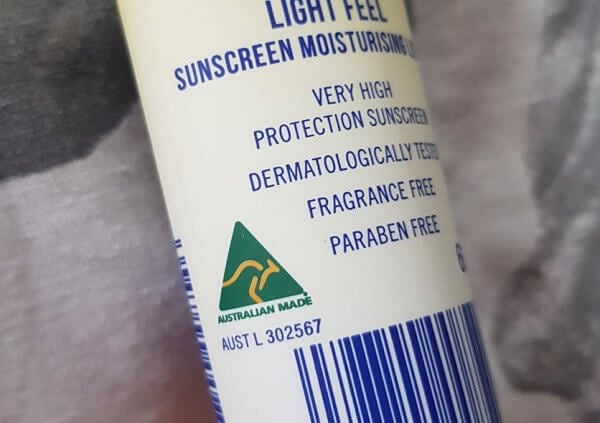
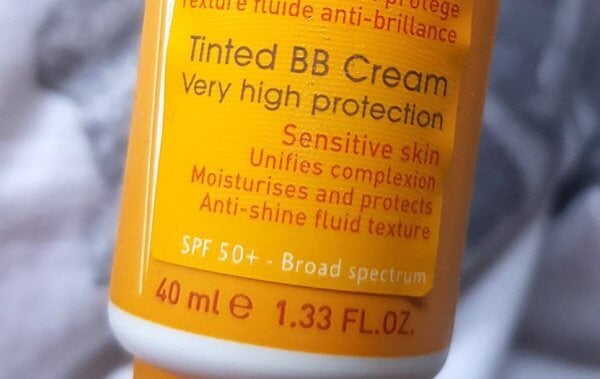
UV Protection
The main requirement for a therapeutic sunscreen to be listed is that the SPF factor has to be tested according to the AS/NZS 2604:2012 standard, which requires testing on a minimum of 10 human subjects in accordance with the international ISO 24444:2010 standard. The results also need to be consistent for the sunscreen to be listed. Any changes to the formula that might affect SPF (including changes to the inactive ingredients) means the sunscreen must be tested again, and often means it’ll need a new ARTG listing number.
Only certain SPF numbers are allowed for therapeutic sunscreens: 4, 6, 8, 10, 15, 20, 25, 30, 40, 50 and 50+.
Related post: What Does SPF Mean? The Science of Sunscreen
Additionally, broad spectrum UVA protection is mandatory for:
- all therapeutic sunscreens regulated by the TGA
- cosmetic sunscreens with SPF 30 or higher
For a sunscreen to be broad spectrum, it has to pass both the critical wavelength >370 nm and UVAPF/SPF ratio >1/3 tests (more info on this in my post on Why you should protect your skin from UVA (and how) (with video)).
Tested water resistance claims can also be included as well.
Active ingredients
Therapeutic sunscreens are limited to using only the permitted active sunscreen filters at the allowed range of concentrations. The safety of these filters (when used at the allowed concentrations) has been assessed by the TGA, so the safety and efficacy of the final formula isn’t evaluated by the TGA for listed sunscreens. The TGA does tell brands to consider the safety of the inactive ingredients in the sunscreen, and ensure that the sunscreen is safe for use in the sun. The TGA also reviews a small selection of listed products each year.
Ingredient lists
In Australia, like many other countries, the ingredients of cosmetic products have to be listed in order of highest to lowest mass or volume. Ingredients that are at less than 1% concentration and colour additives can also be listed at the end instead, in any order. Either the English or International Nomenclature Cosmetic Ingredient (INCI) names can be used. For cosmetic products, exact percentages don’t have to be listed.
However, therapeutic goods are exempted from these labelling requirements. Instead, they have to follow the special labelling requirements for therapeutic goods in Australia. This means that the Australian Approved Names of all of the active ingredients have to be listed, along with the proportions used in the product. This is generally given as a weight percentage (%w/w or %w/v) or a weight concentration per unit product (milligrams per gram (mg/g) or milligrams per mL (mg/mL).
Along with active ingredients, some other ingredients need to be listed if they’re in a therapeutic product:
- Certain preservatives:
- benzoates (benzoic acid, calcium benzoate, potassium benzoate or sodium benzoate)
- hydroxybenzoate esters (ethyl, methyl, propyl, sodium ethyl, sodium methyl, sodium propyl hydroxybenzoates)
- sorbates (sorbic acid or potassium sorbate)
- sulfites (sulfite, metabisulfite and bisulfite salts and sulfur dioxide)
- ethanol, if present at over 3% v/v
- any other antimicrobial preservatives
- peanuts and peanut products (e.g. peanut oil, arachis oil)
- other ingredients listed in Schedule 1 of TGO 69
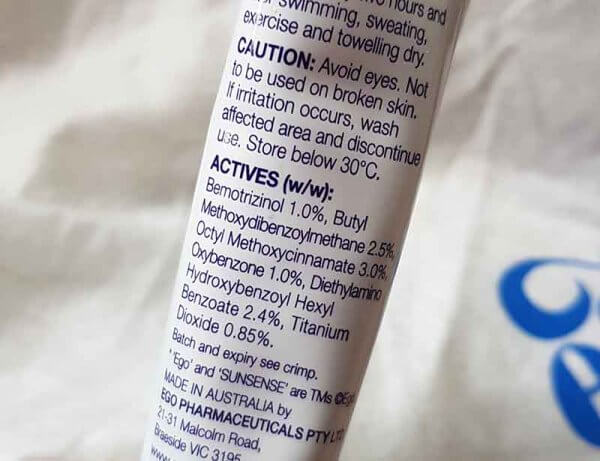
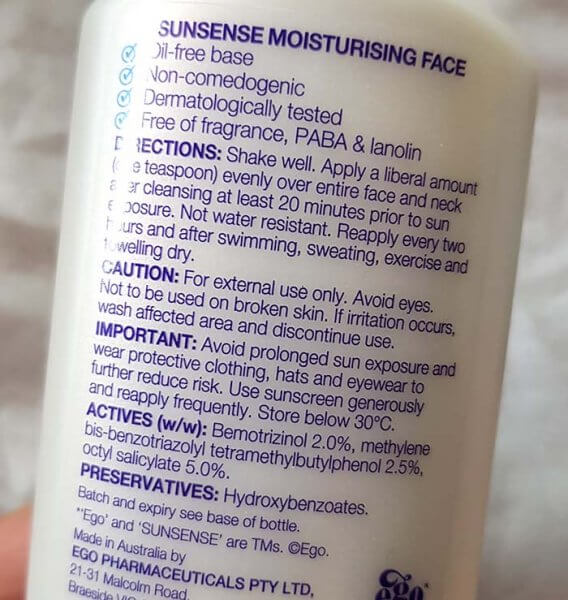
So on the one hand, we don’t always get a full ingredients list for Australian sunscreens (annoying if you’re sensitive to a particular ingredient in the base). On the other hand, we do get to know the exact percentage of each sunscreen filter, which is good if you’re sensitive to them but only at high quantities.
Very rarely, some sunscreen brands have decided to release the full ingredient lists for their products (e.g. Ultra Violette). While this is amazing for us consumers, it does also place the brand at a competitive disadvantage, since other brands can more easily dupe their formulas. Ideally, I’d like if all therapeutic sunscreens had to provide full ingredient lists as well, since they’re used in similar ways to other cosmetics.
UPDATE: The full ingredient lists are now available via the TGA’s Australian Register of Therapeutic Goods (ARTG) database! They’re in alphabetical order, and they use International Non-proprietary Names (INNs) rather than INCI names so they sometimes look a bit weird, but they’re there!
Expiry date and batch number
An expiry date also needs to be printed on the packaging for therapeutic sunscreens. To work out the expiry date, manufacturers need to test the finished product in the intended container. The product is either left at the recommended conditions for the real amount of time (e.g. 30 °C for 2 years) or at equivalent accelerated testing conditions (e.g. 30 °C for 2 years is considered to be equivalent to 40 °C for 6 months).
The product is checked to ensure that there aren’t any microorganisms that have grown to unsafe levels (microbiological stability). It’s also checked for physical stability (whether there are any changes to its appearance, odour or texture, and whether it degrades the container) and chemical stability (pH changes, or if the active ingredients break down).
The batch number of the sunscreen also needs to be printed on the container, so any irregularities can be traced.
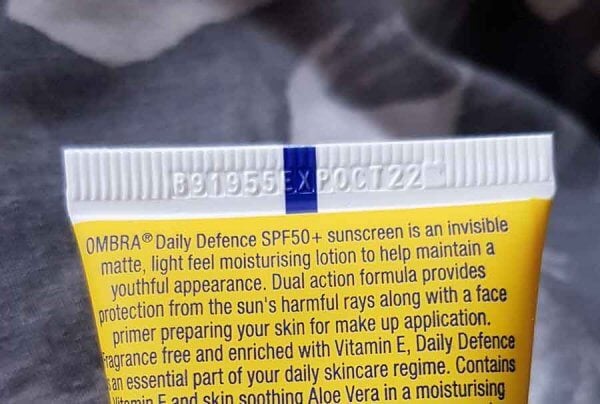
Cosmetic sunscreens also often have expiry dates and batch numbers, and good manufacturers will also perform similar stability tests – but this isn’t mandatory, and brands may skip this test for cost-cutting reasons, or to rush a product to market faster.
Manufacturing
Therapeutic sunscreens also need to be manufactured according to the Good Manufacturing Practice code. This covers things like standards for raw ingredients, product quality and stability testing, and the facilities where therapeutic goods can be manufactured. This is often an issue for overseas manufacturers, since getting TGA approval for an overseas facility can be very difficult.
Other requirements
I’ve only really listed the requirements that are relevant for us as skincare consumers here. There are other regulations, like the words that can’t be used on sunscreens (sunblock, waterproof, sweatproof), and requirements for reporting adverse reactions.
There’s also a requirement that sunscreens can’t suggest that they don’t need reapplication (e.g. “all day protection”). This means that even with improvements in technology that allow longer wear, this claim can’t be made – so unfortunately it does mean that this probably isn’t an area of innovation that Australian sunscreen manufacturers will be investing in.
Hopefully this was an interesting insight into the regulations surrounding sunscreen, and the implications for the types of products we see on the market!
References
Therapeutic Goods Administration, Australian regulatory guidelines for sunscreens (ARGS) Version 1.2 (last updated 30 August 2019, current version as of 19 Jan 2020)


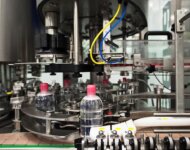
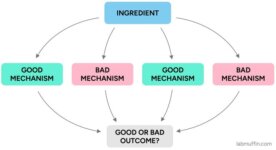
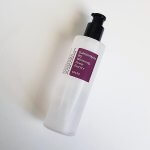
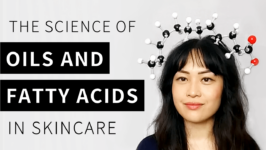
What an informative, clear explanation of the sunscreen industry. Thank you.
That is very interesting! When I was in Australia, the sunscreen labelling confused me. But I like the strict approach, would make me feel safe.
I realise this comment should belong on a diffrent post but i am not sure which one so here goes nothing:
I remember you mentioned that humenctants can counteract drying alcohols in say sunscreen.
So if i live in a dry climate and only have found an alcohol-containing suscreen how would i best avoid TEWL/dehydration?
do i add a humectant toner, the a moisturizer let them sink in and then apply my alcohol containing sunscreen? (btw i use the nivea sensitive sunscreen line because they are super cheap and dry down enough to not migrate into my eyes)
The best from Line
really helpful for myself.
Im going to Melbourne in 2 weeks, looking really forward to it.
xoxo
franziska from powder brows
Ah, so I can see that the 50+ Bioderma product pictured is a cosmetic sunscreen as it would fall into the foundation category.
Unfortunately I have seen so many products marketed as sunscreens with an SPF of 30+ or 50+ and not listed with the TGA . They are definitely not lip products or foundations. One in particular keeps popping up in ads on my social media feeds. Is there any legitimate way for a moisturiser with sunscreen to have a label with SPF 30+ or 50+ (and bypass the TGA), or are they simply non-compliant? Thanks!!!
There might be some loopholes but it would be difficult – if you could share the specific product I could see if there’s any wiggle room?
Thanks!
The one that keeps cropping up in my feed that I can’t figure out is Avocado Zinc.
The formula itself looks professional, and is very similar to a string of formulas that I’ve seen recently in a lot of new sunscreens. So I’m assuming it’s a private label formula or all the manufacturers are using the same ZinClear predispersion in their products. Yet all the other brands I’ve come across I can find on the ARTG.
It sounds shifty to me! I’ve commented on their post asking if they’re listed, we’ll see if they reply or just delete it and block me…
I just had a look on the TGA and they are now registered.
Hello. I love your informed articles on sunscreen. I am in the US and can only get physical zinc or titanium sunscreens (chemical or organic sunscreens often irritate my skin or eyes, so I keep waiting for newer physical blockers like Tinsorb, etc to be here in the US). I might be able to try ordering an Australian sunscreen to see if any of those newer sunblocks that we don’t have irritate me. Do you have any recommendations for sensitive skin?
Also, do you know how much zinc oxide or titanium oxide is required by percentage to get the appropriate SPF’s of 30 or 50? I’m not sure all our physical sunscreens have a high enough amount for the SPF, so a guideline would be helpful.
Thanks so much if you are able to respond.
thank you for the post Michelle <3
So I think this kind of approach is applicable in the case of Paula's Choice. They chose to list their sunscreen as Moisturizer with SPF15 just to avoid all the paperworks and cumbersome with TGA. What do you think? Do you recommend Paula's Choice sunscreen? Thanks
I’m trying to buy Purito sunscreen with niacinimide but I’ve noticed the niacinimide is not included in the ingredients the Australian shops. Is this a change in formula for the Australian requirements?
Dont buy it! It’s has an spf of 19, and since I’ve start using it (more than a year now) I’m getting sooo many pigmentation spots. Def. Go for the Australian sunscreen!
@michelle, can you please give us some recommendations of your favourite Australian sunscreens? I have a medium skin tone, so something that doesn’t turn me into a ghost would be great! :p
Thank you for a great article Michelle.
The sunscreen I use isn’t listed on the TGA website. I’ve looked at the packaging and there is no number either. It says luminizing superfluid SPF50 so obvs I trusted it would protect my face.
I have noticed my skin has been red since using it so I am now thinking I am possibly getting burnt.
Does a sunscreen that does not claim to be predominantly a sunscreen bypass any 3rd party verification of SPF and potentially can be less? If so if they were giving misinformation would this be something the ACCC would look at? I think that’s what I understand from the article.
Are we better off using a sunscreen listed with the TGA to be sure of the SPF?
Many thanks
Your article has really helped me to clear my doubts regarding what type of sunscreen is better for the skin. Most of the sunscreen hides their ingredients. I was really concerned on what types of ingredients they use in those products, are these ingredients harmful to our body if we use them continuously? what happens if we ingest some of the ingredients we apply to the lips.
In the post you have mentioned that cosmetic sunscreen contains animal organ. But how can we be sure that therapeutic sunscreen does not contain them. How can we be sure that therapeutic sunscreen works different than cosmetic sunscreen. Does meeting TGA requirement means they do not do any harmful effect on our body?? I also want to know some of the therapeutic sunscreen that works better and affordable.
I really appreciate your article. This one of the best article that has described in detail about the sunscreen. I will be looking forward for more related content.